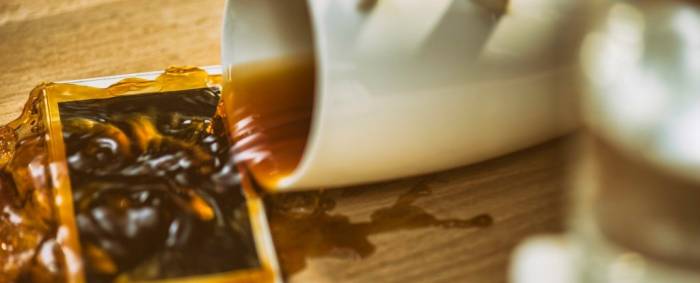But if they were coated with an 'omniphobic' material, like the one created by a team of University of Michigan researchers, your devices would be a lot more likely to come out unscathed.
"I have a 2-year-old at home, so for me, this particular project was about more than just the science," said one of the researchers, materials scientist Anish Tuteja.
"We're excited about what this could do to make homes and daycares cleaner places, and we're looking at a variety of possible applications in industry as well."
This everything-proof material works by combining fluorinated polyurethane and fluorodecyl polyhedral oligomeric silsesquioxane (F-POSS).
F-POSS has an extremely low surface energy, which means that things don't stick to it.
The coating developed by the team stands out from other similar materials because of the clever way these two ingredients work together, forming a more durable product.
"In the past, researchers might have taken a very durable substance and a very repellent substance and mixed them together," Tuteja said.
"But this doesn't necessarily yield a durable, repellent coating."
But these two materials have combined so well, they ended up with a durable coating that can repeal everything - oil, water, or anything else the researchers threw at it.
"The repellent and binder mix together well enough to make a clear coating, but there's a very small amount of phase separation between them," says materials scientist Mathew Boban.
"That separation allows the F-POSS to sort-of float to the surface and create a nice repellent layer."
Although this all sounds amazing, this incredible coating won't be available quite yet – F-POSS is rare and expensive right now, although that is changing as manufacturers scale up the product, which should lower the cost.
We can't wait to see the end product – our phones and laptops are counting on it!
The research has been published in ACS Applied Materials & Interfaces.
More about: #Science
















































